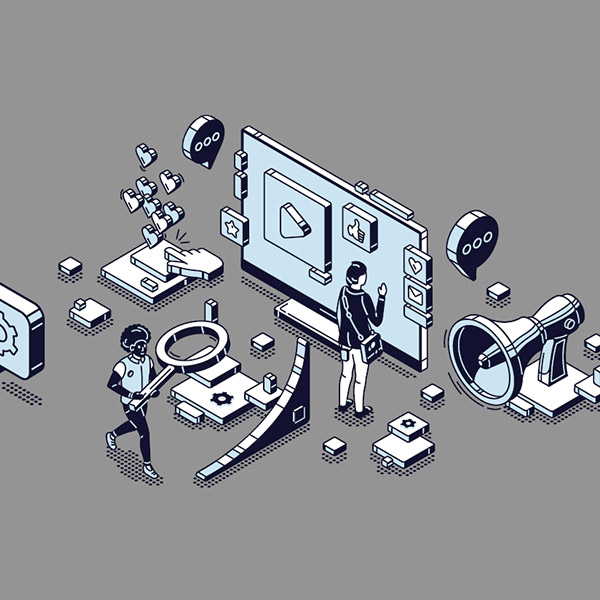시장경제 상황에 따라 발 빠르게 변화하고 있는 중계권 시장. 해외 스포츠 중계 시장은 어떻게 변화하고 있을까. 전 세계 미디어, 마케팅 및 후원 분야에서 20년 이상의 경험을 가진 스포츠마케팅 전문가이자 D2C(Direct to Consumer) OTT 전문 자문회사인 ‘D2C SPORT’에서 활동하고 있는 Murray Barnett 의 기고 전문을 싣는다.
현재 페이지에 실린 원고는 독자들의 편의를 위해 번역 및 일부 의역하였습니다. 원문을 보고 싶으시면 [원문보기]를 눌러주세요.
SPORTS BROAD CASTING
- THE IMPACT OF OVER THE TOP (OTT)
The relationship between sporting endeavour and humans has been a long and passionate one. Nothing sets the emotions racing as much as watching athletes competing against each other. As with anything emotional, we behave irrationally in these situations. This is very noticeable in the sports rights marketplace. Broadcasters are fully aware of the passionate and committed nature of sports fans, making certain sports content “must have”, driving viewers to their pay TV propositions and/or attracting higher advertising revenues. In turn, sports rightsowners recognise that the price of sports rights is not a factor of value but of competition, with their job being to entice new bidders into the marketplace. Until now the price elasticity for premium sports content has been stretched and stretched.
Two things have had a major impact on this model, firstly the global COVID crisis which has squeezed the ability for media companies to pay the ever-increasing rights fees and in turn, pass them on to consumers. Secondly, the rise of OTT which has presented rightsholders with a completely alternative distribution method, cutting out the need for broadcast partners. That’s not to say OTT is the panacea. Having a direct-to-consumer OTT relationship is a highly complex undertaking for rightsholders who have been B2B businesses up to this point.
In analysing trends in the global sports media rights market, each territory has certain specific nuances however, they largely behave in a similar fashion when looking at the macro trends. The exception is the USA. This is for a few reasons. The USA is the most highly developed sports media marketplace in the world, the spiritual home of sports marketing. The sheer size and economic profile of the market gives it scale few others can match. Also, the main rightsholders (NFL, MLB, NBA) sell multiple packages of exclusive rights of specific games in each league.
Generally, outside the USA, rights are sold on an exclusive (or sometimes co-exclusive) basis. In the USA, the structure of sales means multiple major broadcast outlets get a piece of a sport creating a wide audience and constant tension in the market for the rights. They have also successfully been able to launch their own OTT services in parallel (something that is more difficult in the rest of the world where frequently one broadcaster has exclusivity). The US model is partly due to the sheer number of games they have. By way of example, the NBA plays 2460 regular season games + playoffs and finals. This compares to 380 English Premier League games.
At this point, it is important to acknowledge specifically what OTT is. Advances in broadband and mobile bandwidth have made it possible for rightsholders to go “direct-to-consumer” without the need to have broadcasters (owners of the distribution mechanisms) in the middle. Another factor for OTT is reaching different demographic profiles. Younger people are primary cord cutters, having neither the financial wherewithal to pay high (bundled) monthly subscriptions nor the habit (having grown up in the digital media age. They also tend to gravitate to shorter and/or different formats of content, something very suitable for OTT.
OTT as a distribution mechanism is now also used by previous traditional sports broadcaster aggregators such as ESPN & Sky Sports. Naturally new aggregator entrants such as DAZN are also using OTT delivery. Another type of aggregated OTT is Amazon Prime. They offer a mix of consolidated sports content (ATP Tennis, NFL, Rugby, Volleyball and NFL depending on your location) included as part of a Prime subscription, along with the ability to purchase additional sports content providers such as Eurosport (another aggregator) or La Liga (a single league OTT) again depending on location.
Standalone OTT is the purest form of OTT. It is a single league, showing exclusively events from that sports, league, or club along with other types of content such as documentaries, classic archive, and highlights. Standalone OTT appeals to the most fervent fans. Aggregated OTT can appeal to a wider group of more general sports fans. OTT evangelists maintain the key value of OTT is that unlike with cable and satellite channel bundles, you only pay for what you want. Therefore, aggregated OTT is just about distribution mechanisms.
It can be argued the cycle-on-cycle growth in sports TV rights was always going to be unsustainable. Indeed, there has been an increasing polarisation between the cost of top “driver” sports rights like Premier League and UEFA Champions League compared to ‘nice to have’ sports like ATP Tennis. In many ways, the less premium sports TV properties have been the most innovative in looking at new distribution methods as they are forced to look at alternatives when faced with declining revenues.
ATP as a traditional rightsholder who saw its revenues start to plateau and niche sports such as UFC (who have had to innovate to grow) have been at the forefront of building dedicated audiences though experimentation with different types of OTT. ATP was one of the first to working with Amazon Prime in a substantial way and UFC has bult a highly successful standalone OTT business.


In 2018 at the announcement of the agreement with Amazon Prime UK, Chris Kermode, ATP’s executive chairman and president, said: “We’re looking to the future … We’re really trying to find ways to be innovative, creative and be aware of the changing landscape of how people are consuming sports and entertainment and trying to get a younger demographic… This change is coming at such a fast pace, and we want to be at the forefront of this. This is not just about taking a cheque. We want the weight of Amazon to get behind the sport and that was really one of the deciding factors.”.
This statement perfectly encapsulates the environment and benefits of OTT. No doubt ATP would not have taken this path if there had been sufficient competition amongst the traditional broadcast partners to generate strong rights fees, however they have also blazed the trail for many other sports to follow.

In the case of UFC, their OTT was also borne out of a lack of sufficient competition amongst broadcasters for their US Rights. Rather than sell at a sub-optimal value to an OTT like Amazon Prime, or a traditional sports aggregator like ESPN, they decided to double down on their own OTT service UFC Fight Pass. There are four reasons why UFC parent company, Endeavor, chose to do this:
① Alternative distribution option – The back up plan to lack of broadcaster competition for their rights in the US.
② Owning customer data – Direct-to-consumer OTT allows rightsholders like UFC to better understand their customer habits and allows them to monetise customers through other revenue streams such as merchandising and event tickets
③ Subscriber experience – With the customer data & habits information, they are able to create much better content and a customer experience that really resonates with their audience.
④ Revenue – As Endeavor also owns NeuLion (now Endeavor streaming) who manage the UFC’s streaming, they were able to increase margins (streaming revenues and subscriber revenues combined).
What does all of this mean for the future of sports broadcasting and sports rights? What is clear is in all forms of entertainment, there will be an increasingly diverse media mix for rightsholders. Standalone OTT will play a significant role in super serving dedicated fans. They will be willing to pay strong subscription fees for their preferred sports content. However, they will also be increasingly demanding in terms of the content they want to watch and their expectations of what they get for their subscription.
The new battleground will be attracting wider audiences to standalone OTT sports services which by definition will be only for hard core fans. Being able to retain some content for more widely viewed platforms (be that aggregated OTT or traditional sports broadcasters) will remain key as a marketing funnel to stand alone OTT. Social and digital will also play an important part in attracting potential new subscribers. Increasing pressure will also be put on marketing efforts to drive more casual fans to become subscribers.
One future trend to look out for is aggregators selling multiple standalone OTT services as part of a package. For example, offering Liverpool FC (LFCTV GO) and NBA TV combined at a slightly discounted rate. This is likely to surface as clubs and leagues have saturated their reach of core fans and look to expand their subscriber bases. It is also possible that broadband and mobile operators will look to discount sports OTT subscriptions to attract new customers in much the same way they currently do with traditional sports broadcasters (EG BT Sport & BT Broadband in the UK).
In summary, OTT is still at a very early stage of its evolution. It is undoubtedly an important part of the media mix as it helps leagues and clubs build direct to consumer relationships which are monetised both directly through reoccurring subscriptions but also is beneficial in monetising other revenue streams. Aggregated OTT services or traditional sports broadcasters remain an important part of the overall media (revenue and visibility) strategy as they serve a wider group of fans who are not (yet) ready to subscribe to a single sports/team/league service or are more casual sports fans. What is clear is that right holders will need to become increasingly sophisticated if they are to continue increasing media and commercial revenues.
코로나와 OTT가 변화시킨 중계권 시장
인류와 스포츠는 아주 길고도 열정적인 시간을 공유해 왔다. 운동선수들의 치열한 경쟁만큼 우리의 가슴을 뜨겁게 달구는 경험도 없다. 스포츠 중계를 보면서 우리는 감정에 휘둘려 비이성적 행동을 보이기도 한다. 스포츠 중계권 시장에서는 바로 이 지점을 공략한다. 방송사는 스포츠팬들의 열정과 충성도를 이용해 자사의 스포츠 콘텐츠를 “절대 놓쳐선 안 된다”며 홍보해 그들을 유료화와 광고료 극대화의 우리 안으로 몰아댄다. 한편, 프로단체 측도 중계권 가격이 종목 자체보다 대회의 가치에 따라 결정된다는 원리를 잘 알기 때문에, 시장에서 더 많은 중계권 구매 의향자들의 참여를 독려한다. 높은 인기를 구가하는 특정 스포츠 콘텐츠의 중계권 가격은 지금까지 폭발적 인상률을 기록해 왔다.
이랬던 스포츠 중계권 시장에 두 가지 커다란 변수가 발생했다. 우선 코로나19 팬데믹이다. 전대미문 바이러스의 공격으로 인해 미디어 사업자들은 인상되기만 했던 스포츠 중계권료 부담을 시청자들에게 더이상 전가할 수 없게 되었다. 두 번째 변수는 OTT(Over The Top)의 급부상이다. OTT는 기존 중계권 보유 방송사들과 전혀 다른 배급 수단으로서 기존 방송 파트너들의 광고 기회를 차단한다. OTT가 만병통치약이란 뜻은 아니다. OTT와 최종 소비자의 직접 거래는 지금까지 B2B 형태로 사업을 유지했던 기존 중계권 보유 방송사들에 매우 복잡한 사업 방식이다.

미국 스포츠 중계권 시장의 특징
글로벌 스포츠 중계권 시장의 트렌드를 분석하면, 각국 시청자들은 고유의 취향을 나타내면서도 큰 틀에서는 비슷한 방향으로 흘러간다. 다만, 미국은 예외다. 여기에는 몇 가지 이유가 있다. 스포츠마케팅의 정신적 고향인 미국은 전 세계에서 스포츠 미디어 시장이 가장 진화한 국가다. 시장의 규모와 다양성 면에서 따라올 자를 찾기 어렵다. NFL, MLB, NBA 등 주요 스포츠 중계권 판매자들은 저마다 특정 경기의 독점 중계권을 다수의 패키지로 만들어 판매한다.
미국 외 국가들의 경우 스포츠 중계권 판매는 독점성(때로는 공동 구매)에 기반을 둔다. 미국은 판매 구조가 훨씬 복잡하다. 주요 방송사들은 시장에서 좀 더 많은 시청자와 그들의 관심을 높은 수준으로 유지하기 위해 세분화된 중계권을 확보한다. 동시에 방송사는 자체 OTT 플랫폼을 성공적으로 론칭했다. 단일 방송사가 독점권을 보유하는 형태의 다른 국가에서는 이런 사업 방식을 구현하기가 어렵다. 미국 모델은 방대한 경기 수가 있기에 구현 가능한 면도 있다. 예를 들어, NBA는 정규 시즌에만 2,460경기를 진행하며 여기에 플레이오프와 파이널 단계까지 붙는다. 연간 총 380경기를 치르는 잉글랜드 프리미어리그와 비교되는 지점이다.
다양한 소비자 끌어안는 OTT 서비스
여기서 우리는 OTT가 정확히 어떤 것인지를 짚고 넘어가야 한다. 이동통신 주파수의 광대역화 덕분에 스포츠 중계권 판매자는 이제 중간 단계에 있던 방송사(중계권 유통사)들을 거치지 않고 직접 최종 시청자에게 도달할 수 있다. OTT의 또 다른 특징은 다양한 연령대 시청 그룹을 세분화해 공략할 수 있다는 점이다. ‘코드커터(cord cutter, 기본 TV 방송 서비스를 이용하지 않고 인터넷을 통해 시간 등의 제약 없이 편리하게 방송을 보는 소비자 -역주)’라고 불리는 젊은 세대는 스포츠 중계를 위해 매달 비싼 시청료를 낼 만큼 경제적으로 풍족하지 않다. 또 이들은 디지털미디어 시대에서 자랐기 때문에 부모 세대와 미디어 소비 취향이 다르다. 젊은 세대는 좀 더 짧은 영상, 기존과 다른 포맷의 미디어에 끌리는데, 이런 점이 OTT 서비스와 아주 잘 맞아떨어진다.
콘텐츠 배급 방식으로서의 OTT는 이미 ESPN이나 스카이스포츠처럼 전통적인 스포츠 방송사들에 의해 수행되고 있다. DAZN 같은 신생 미디어 제공자도 OTT 형태를 취하는 것은 매우 자연스러운 현상이다. 또 다른 OTT 서비스 사업자로서 아마존 프라임도 있다. 아마존 프라임은 기존의 ‘프라임 구독’ 콘텐츠에 ATP 테니스, NFL, 럭비, 배구, NFL 등(국가별 차이 존재) 강력한 스포츠 콘텐츠들을 결합했다. 압도적 자금력을 앞세운 아마존 프라임은 해외에 유로스포츠나 라리가(독립형 OTT)의 중계권을 확보하고 있다.
독립형 OTT는 OTT의 가장 원초적 형태다. 리그나 클럽이 경기는 물론 자체 제작한 다큐멘터리, 과거 경기 영상, 하이라이트 등을 독자적으로 제공하는 방식을 말한다. 독립형 OTT는 가장 충성도가 높은 스포츠팬을 겨냥한다. 반면, 종합형 OTT는 좀 더 폭넓은 스포츠팬을 대상으로 삼는다. OTT 전도사들은 OTT의 핵심 가치가 케이블이나 위성채널과 달리 보고 싶은 콘텐츠에 대해서만 시청료를 지불할 수 있는 점이라고 설파한다. 그렇기 때문에 종합형 OTT는 콘텐츠 유통의 새로운 종류라고 할 수도 있다.
ATP가 아마존 프라임과
손잡은 이유


2018년 ATP의 크리스 커모드 회장은 아마존 프라임 UK 계약을 발표하면서 이렇게 말했다. “우리는 미래를 바라보고 있다. 우리는 혁신적이고 창의적인 방법을 찾기 위해 노력 중이다. 스포츠와 엔터테인먼트 콘텐츠를 소비하는 방식은 바뀌고 있으며 좀 더 젊은 세대를 잡아야 한다는 시장 변화를 잘 알고 있다. 이런 변화의 속도는 매우 빠른데, 우리가 최전선에 서고자 한다. 단순히 돈을 벌겠다는 목적이 아니다. 우리는 스포츠 콘텐츠의 활성화를 위해 <아마존>의 무게감이 필요했다. 이번 판단의 주된 이유 중 하나라고 할 수 있다.”
커모드 회장의 설명은 OTT의 환경과 장점을 완벽하게 요약한다. 만약 전통적 방송사 파트너들이 테니스 중계권을 확보하려는 경쟁이 충분했다면, ATP가 이런 결정을 내릴 필요는 없었을 것이다. ATP의 선제적 결정은 다른 종목들이 뒤따를 수 있는 구실을 제공했다.
UFC가 자체 OTT 서비스를
밀어붙인 이유

UFC의 독립형 OTT 서비스 론칭도 미국 내 기존 방송사들의 중계권 경쟁 부족이 낳은 결과였다. 이런 상황에서 UFC는 차선책이었던 아마존 프라임 혹은 ESPN처럼 전통적 종합 스포츠채널에 중계권을 팔기보다 자체 OTT 서비스인 ‘UFC 파이트패스(Fight Pass)’를 론칭하기로 했다. UFC의 모기업인 ‘엔데버(Endeavor)’가 이런 판단을 결심한 이유는 네 가지였다.
첫째, 콘텐츠 유통 대안의 확보였다. 미국 내 중계권 판매 부진에 따른 대응책이었다는 뜻이다. 둘째, 자체적으로 고객 데이터를 확보할 수 있었다. OTT 서비스를 통해 UFC는 고객의 소비 습관을 더 명확하게 파악할 수 있어 머천다이징 상품, 이벤트 티켓 판매 등 부수적 매출원을 극대화할 수 있는 발판이 되었다. 셋째, 구독자 경험 향상이다. 고객 데이터 및 소비 습관 정보를 바탕으로 UFC는 소비자가 원하는 콘텐츠를 제작해 시청 만족도를 높일 수 있다. 마지막으로 매출 신장이다. ‘엔데버’사가 소유한 ‘뉴라이언(NeuLion; 현재 ‘엔데버 스트리밍’)이 UFC의 스트리밍 서비스를 직접 수행해 영업이익을 키울 수 있었다.
중계권자 위한 미디어 믹스 다양해질 것
이런 케이스들은 스포츠 콘텐츠 및 중계권의 미래에 어떤 의미를 가질까? 엔터테인먼트라는 큰 틀에서 중계권 판매자들이 제공하는 미디어 콘텐츠가 예전보다 훨씬 다양해질 것이라는 관측은 매우 명확하다. 독립형 OTT는 까다로운 스포츠팬들의 취향까지 저격하는 데 큰 역할을 한다. 선호하는 스포츠 콘텐츠에 대한 시청자들의 비용 부담 의지가 커지는 동시에 시청자들은 자신들이 지불한 구독료에 합당한 고품질의 콘텐츠를 요구할 것이다.
독립형 스포츠 OTT는 하드코어 시청자를 위한 전문 서비스로 정의할 수 있지만, 향후 과제는 역시 더 많은 시청자를 확보하는 일이다. 종합형 OTT나 전통적 스포츠 방송사처럼 좀 더 대중적인 콘텐츠의 확보 여부가 독립형 OTT로서는 중요한 마케팅 실행방안일 수밖에 없다. 소셜미디어(SNS)와 디지털 마케팅은 신규 시청자 유치에 있어서 중요한 플랫폼이 될 것이다. 경쟁이 심화되는 상황에서는 일반 시청자를 구독자로 끌어들이기 위한 마케팅 노력이 반드시 필요하다.
종합 스포츠채널이 복수의 독립형 OTT를 패키지 상품처럼 꾸며 판매할 것이라는 예측도 있다. 예를 들어, 리버풀FC(LFCTV GO)와 NBA TV 콘텐츠를 묶은 상품을 할인 판매하는 식이다. 충성도가 높은 시청자 확보가 한계에 다다른 클럽이나 리그가 구독자 풀을 확장하기 위해서라면 충분히 시도해볼 만하다. 인터넷 및 이동통신 사업자도 스포츠 OTT 구독료를 낮게 책정해 새로운 고객을 유치할 수 있다. 영국의 전통적 스포츠 방송사인 ‘BT(British Telecom)’는 이미 ‘BT 스포트’와 ‘BT 브로드밴드’ 서비스를 묶음 판매 중이다.
OTT는 여전히 진화의 초기 단계에 있다. 스포츠 리그와 클럽들이 고객과의 직접적 관계를 구축함으로써 구독료 수입뿐 아니라 추가적 매출원을 발굴할 수 있다는 점에서 OTT는 매우 중요한 미디어 전략이 아닐 수 없다. 종합형 OTT 서비스나 전통적 스포츠 방송채널은 매출 규모나 시청률 면에서 여전히 큰 부분을 차지한다. 개인화된 리그나 이벤트, 경기의 선택적 시청을 원하는 미래형 스포츠팬들보다는 여전히 일반적 개념의 시청자 그룹이 큰 덕분이다. 단, 스포츠 중계권 판매자들이 앞으로도 미디어 및 각종 사업 매출의 지속적 증대를 원한다면, 과거보다 훨씬 복잡하고 정교한 전략 수립이 필요하다는 사실은 틀림없어 보인다.






